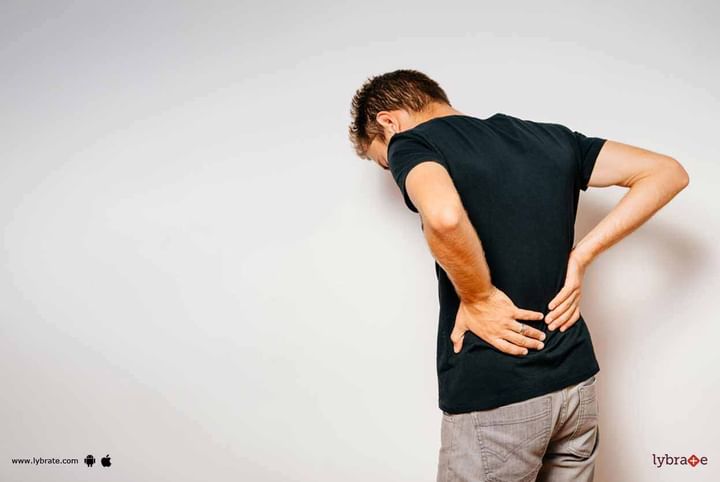Slip Disc - Treating It With Sciatica!
Introduction The intervertebral discs are made-up of two concentric layers, the inner gel-like Nucleus Pulposus and the outer fibrous Annulus fibrosus. As a result of advancing age, the nucleus loses fluid, volume and resiliency and the entire disc structure becomes more susceptible to trauma and compression. This condition is called as degeneration of the disc. The disc then is highly vulnerable to tears and as these occur, the inner nucleus pulposus protrudes through the fibrous layer, producing a bulge in the intervertebral disc. This condition is named as herniated disc.
Symptoms -
This protrusion can then cause compression to the spinal cord or the emerging nerve roots and lead to associated problems of Sciatica radiating pain from back to legs in the distribution of the nerve. Other symptoms could be a weakness, tingling or numbness in the areas corresponding to the affected nerve. Sometimes bladder compromise is also present, which is made evident for urine retention and this need to be taken care as an emergency.
Causes of weak disc -
Excessive weight, bad postures, undue movements, improper weight lifting and other kinds of traumas may weaken the intervertebral discs. When this occurs the pulpous nucleus will bulge against the annulus, or even be squeezed through it (extruded disc).
How to deal with it?
- The first step to deal with a herniated or prolapsed lumbar disc is conservative management.
- Rest,
- Analgesic
- Anti-inflammatory medication
- Physical therapy.
At this point, Sometimes it is convenient to have some plain X-rays done, in search of some indirect evidence of the disc problem, as well as of degenerative changes on the spine.
What to do if pain does not improve?
If in a few weeks (4 weeks) these measures have failed, the diagnosis has to be confirmed by means of examinations that give better detail over the troubled area, as the MRI, CT which will show the disc pathology, the space behind it (Spinal canal) and the nerves. In some instances, the EMG (electromyography) is also of great value, as this will show the functionality of the nerves and muscles.
Diagnosis -
Using precision diagnostic & therapeutic blocks in chronic LBP, the following pain generators in lower back have been found:
- Isolated facet joint pain in 40%, discogenic pain in 25% (95% in L4-5&L5S1), segmental dural or nerve root pain in 14% & sacroiliac joint pain in 15% of the patients.
Treatment -
Once the diagnosis has been confirmed, there are a variety of treatment options which are non-surgical:
First Method:
- Image-guided Epidural injection (70% of patients do very well with this)
- Indicated in Acute radicular pain due to irritation or inflammation.
- Symptomatic herniated disc with failed conservative therapy
- Acute exacerbation of discogenic pain or pain of spinal stenosis
- Neoplastic infiltration of roots
- Epidural fibrosis
- Chronic LBP with acute radicular symptoms
- Epidural Lumbar injection
ESI Treatment Plan Compared to interlaminar approach better results are found with a transforaminal approach where drugs (steroid+ LA/saline +/- hyalase) are injected into anterior epidural space & neural foramen area where herniated disc or offending nociceptors are located. Whereas in interlaminar approach most of drug is deposited in posterior epidural space.
Second Method:
If pain doesn't subside and diagnosis is in doubt we perform Provocative Discography - Coupled with CT.
A diagnostic procedure & prognostic indicator is necessary for the evaluation of patients with suspected discogenic pain. This test has the ability to reproduce pain on injection of the affected disc, to determine type of disc herniation/tear by performing post discography CT scan.
Once we know which disc is painful and what type of disc prolapse it is, we may plan further intradiscal treatments.
Third Method:
One of the best alternatives existing today is the Disc Fx and disc biculoplasty RF ablation, as the results obtained are excellent and practically has minimal to no complications. This novel treatment avoids the use of surgery in 80% of those who needed it. The popularity of this technique is that it achives similar or better success rates in well selected patients.
Fourth Method:
Ozone Discolysis: Ozone Discectomy a revolutionary least invasive safe & effective alternative to spine surgery is the treatment of choice for prolapsed disc (PIVD) done under local anaesthesia in a daycare setting. This procedure is ideally suited for multilevel cervical & lumbar disc herniation with radiculopathy.
The total cost of these procedure is much less than that of surgical discectomy. All these facts have made this procedure very popular. It is also gaining popularity in our country due to high success rate, less invasiveness, fewer chances of recurrences, remarkably fewer side effects meaning high safety profile, short hospital stay, no postoperative discomfort or morbidity and low cost.
Fifth Method:
Nucleoplasty and Dekompressor discectomy are other common techniques in some patients. This helps in debulking the disc and thereby reduces the nerve compression.
Sixth Method:
Epidural Adhesiolysis or Percutaneous Decompressive Neuroplasty for Epidural Fibrosis or Adhesions in Failed Back Surgery Syndrome (FBSS). A spring-loaded catheter is inserted in epidural space via caudal/interlaminar/transforaminal approach.
After epidurography, testing volumetric irrigation with normal saline/LA/hyalase/steroids/hypertonic saline in different combinations is then performed along with mechanical adhesiolysis with spring loaded or stellated catheters or under direct vision with epiduroscope.
Seventh Method:
Some patients (less than 2 %) do need surgery if pain doesn't improve. In today's time, open surgery is not required in most cases. Percutaneous endoscopic discectomy is most advanced and stitchless surgery which is done under local anesthesia. Patients recover very fast and go home on same or next day.
Conclusion - In today's time, back pain due to disc herniation is managed best by pain management doctors as they offer range of nonsurgical of minimally invasive surgical options with better success rates and minimal complication rates. The patients do recover very fast without the need to be in the hospital.



+1.svg)
